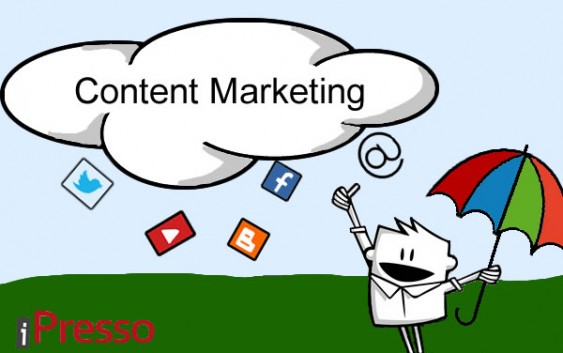What is a buyer persona, and how to create it?

Do you use buyer (or customer) personas in your marketing activities? With them, you can craft more accurate and effective marketing campaigns, develop a more in-depth bond with your customers, and offer them improved CX. Let’s see what there is to know about customer personas.
In general, a customer persona is a representation of your ideal customer. Typically, such a representation is made in the form of an infographic or a spreadsheet. Persona usually has a name, a job and some more detailed information concerning its demographic characteristics, behaviors, motivations, needs, problems, and challenges.
The main goal behind creating buyer personas is to understand your customers better. And this approach is definitely effective! According to MarketingInsiderGroup research, 93% of companies that exceed lead and revenue goals segment their database by buyer persona. Therefore, creating such a persona can help your company grow.
Now, let’s see what the major types of customer personas are and how to create them.
Types of buyer personas
We can distinguish three main types of customer personas:
- Primary persona: It’s the most important type representing your ideal customers. Usually, when you hear about buyer personas, people referring to them mean primary personas.
- Secondary persona: It’s the less important customer. You can try to reach them with your marketing campaigns, but if you don’t, it won’t cause too much loss.
- Negative persona: The last type is all about people and companies that you don’t want as your customers. In this group are all the people who aren’t a good fit for your business, including those who always complain about the product quality, send ordered products back, or have excessive expectations. You’re better off without them.
How to create a buyer persona
Customer persona should never be created based on someone’s hunch or subjective opinions. In the perfect scenario, you start by gathering as much data about your customers as possible. Here, you have two options. First of all, you can opt for feedback from your current customers. Here, we mean focus groups, questionnaires during the onboarding process, NPS, and customer surveys. The second option is quantitative research, and that option comprises online data analytics coming from your CRM tool, e-commerce platform, and web analytics tool (like Google Analytics with its “Audience” tab, which is extremely useful in creating a customer persona).
CREATE A TEAM WORKING ON A BUYER PERSONA
Suppose you already have all the customer data you can get. The next step is to create a team that will analyze that data and work together on creating buyer personas for your company. Every department that has anything to do with customers (marketing, sales, customer service, quality assurance, etc.) should be involved because every department has its own view of customers and can provide useful input.
All the gathered information should be divided into categories that will next be used to create a buyer persona. Typically, you need to consider the following elements:
- Demographics and personality
- Pain points and challenges
- Motivations and aspirations
- Behaviors and habits
Sometimes, if that’s relevant, companies go even beyond these basic points and add more characteristics, including hobbies, family members, pets, favorite dish, etc. The goal is to get a persona that’s as authentic as possible. To come up with a useful description of all these elements, you will most likely need to conduct several meetings/workshops, but that’s the best way to create a persona that truly reflects your company’s target audience.
USE YOUR PERSONA TO IMPROVE YOUR MARKETING AND COMMUNICATION
Creating a marketing persona has a very specific goal – to understand your customers and improve communication with them accordingly. When you understand who you are talking to and what are their real needs, you can:
- Use the language your customers speak
- Concentrate on benefits and problems that matter to them
In fact, these two points are vital in all your marketing materials, including the website, social media profiles, product descriptions, newsletters, and all the other materials you use. And speaking of the language – customer persona comes in handy concerning content marketing. Understanding people’s problems and needs leads to creating blog posts and other texts that resonate with your potential customers. As a result, you are more likely to acquire more customers through this marketing channel.
USE YOUR PERSONA TO IMPROVE CUSTOMER SERVICE
Additionally, a customer persona is extremely useful when it comes to your company’s customer service. Knowing who’s on the other side can help you assist customers in a better, more insightful way. And, of course, customers feel happy when they know that they are at the very center of everything your company does – they feel taken care of and valued, and that’s indispensable for creating good, long-term relationships.
A NEVER-ENDING PROCESS
To some extent, creating and improving your buyer personas never ends. That’s because the market is constantly evolving, and your customers are evolving with it. Solutions and strategies that were effective ten years ago are forgotten today. New communication channels are constantly emerging, and so are new technologies streamlining the purchasing process. Your buyer persona should reflect these changes. And, of course, if at some point you decide to change/broaden your company’s scope of service, the adjustment in the customer persona’s profile is more than needed.
Example of a B2B customer persona
To show you how a customer persona could look in real life, we created a fictional example for a company just like ours – a B2B platform offering marketing automation. Let’s use the four sections we mentioned above:
Demographics and personality
Name: Mark Smith
Job title: Marketing manager
Company: An online store selling 1,000+ products monthly
Location: London, UK
Pain points and challenges
Mark is very busy; his marketing department isn’t so big, so he has to do a lot of work himself. He spends more time than he’d like on repetitive assignments and activities, like sending newsletters and publishing social media posts.
Motivations and aspirations
Mark would like to focus on more strategic work and have more free time (he frequently works after hours, which he hates).
Behaviors and habits
Mark starts his day by planning work. He has a to-do list comprising mostly repetitive activities like sending newsletter, preparing and optimizing ad campaigns, posting on social media, doing research on what’s new in e-commerce and the company’s niche, or supervising his assistant’s work.
With such a background, you can think of the most effective communication that will resonate with Mark and people like him. Perhaps you can emphasize the opportunity to save a lot of time on repetitive, mundane tasks, or the ability to concentrate on more important and strategic work.
Use iPresso to create customer personas
At iPresso, we understand the value of well-designed customer personas. That’s why we designed a tool that will help you create as many of them as you need for your company. Our persona creator comes with everything you need, and other data sources within our marketing automation platform will provide you with reliable and accurate information on what to include in your persona(s).
Do you want to know more? Start a free trial today!






